Re Waveguide drawing, I used an example from Joel Wesseling and gave it to my industrial designer friend, who then produced a sample made of Acetal (also known as Delrin). I asked for a small adjustment near the throat. This is the part that forms the hole in the middle and needs to fit into a bevel on the front plate of the tweeter. The second sample proved perfect, but I don't have drawing of it. I only have the earliest drawing of the square Waveguide that was used to upgrade earlier Elsinores like the Mk1 where we had a large square cavity to fill. I can find that drawing and post it.
The current Waveguide is so precise that the tweeter self-centers itself. It itself is the drawing. Maybe I should try measure it and make a drawing. Maybe I will try that (difficult).
Been an incredibly busy week here that included day surgery for me (a bit sore, but all well), admission to hospital of my son and wife twice to the dentist... chaotic for sure. Looking forward to catching up with work this week which includes sending out two EL-6 kits.
The current Waveguide is so precise that the tweeter self-centers itself. It itself is the drawing. Maybe I should try measure it and make a drawing. Maybe I will try that (difficult).
Been an incredibly busy week here that included day surgery for me (a bit sore, but all well), admission to hospital of my son and wife twice to the dentist... chaotic for sure. Looking forward to catching up with work this week which includes sending out two EL-6 kits.
Last edited:
Just lurking the thread, but +1 .
Often craps flight in squadron like **** that hit the fan. 🙁
(often the mess arrive all in the same time like Joe described in a standalone day that waste it... so they flight in squadron and you eventually are covered by them)
Often craps flight in squadron like **** that hit the fan. 🙁
(often the mess arrive all in the same time like Joe described in a standalone day that waste it... so they flight in squadron and you eventually are covered by them)
I found a drawing that I forgot I had.
The key is the fit inside the bevelled edge, you don't want a gap there.
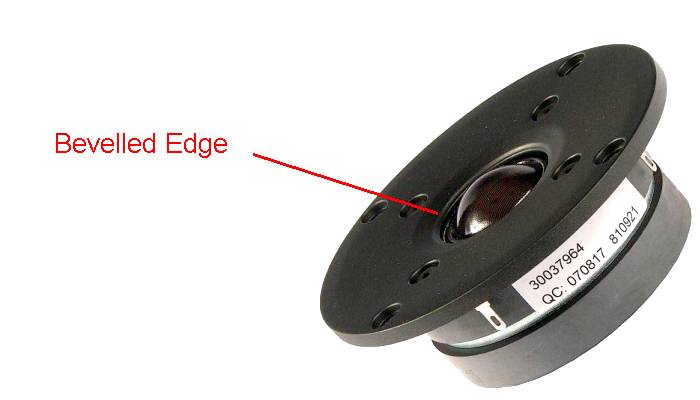
This is bad and will give you an irregular response:
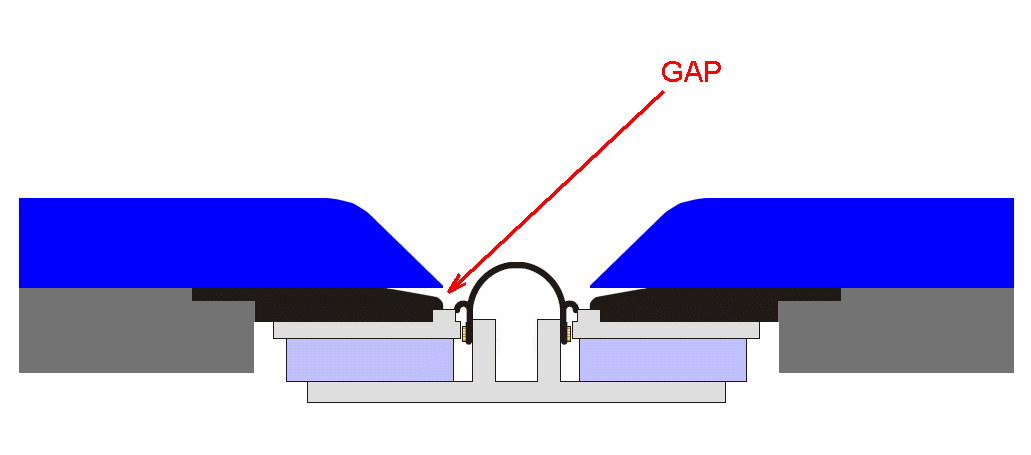
This was the original drawing with the square 18mm MDF was used, was hand-made by a friend, about ten pairs:
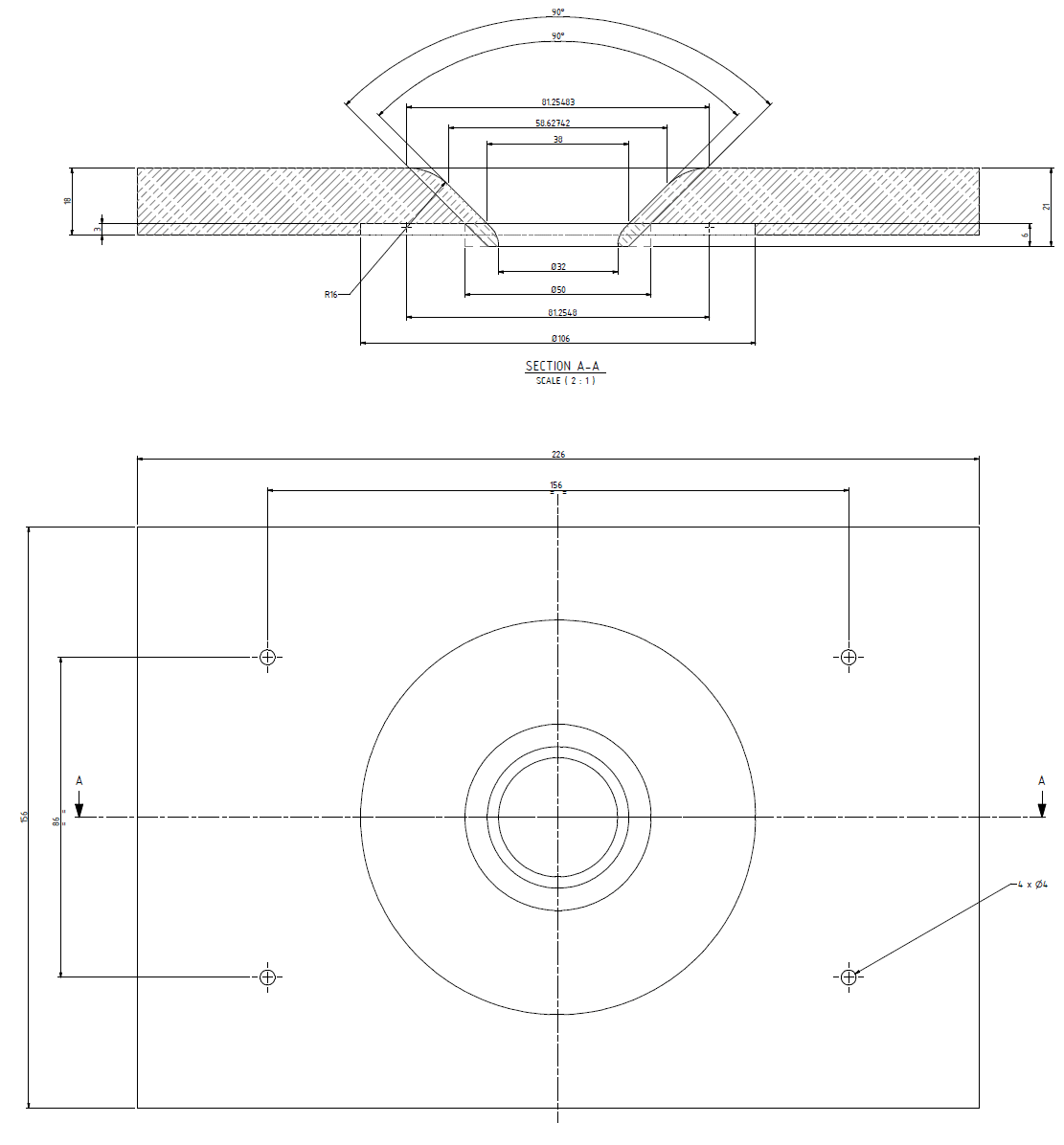
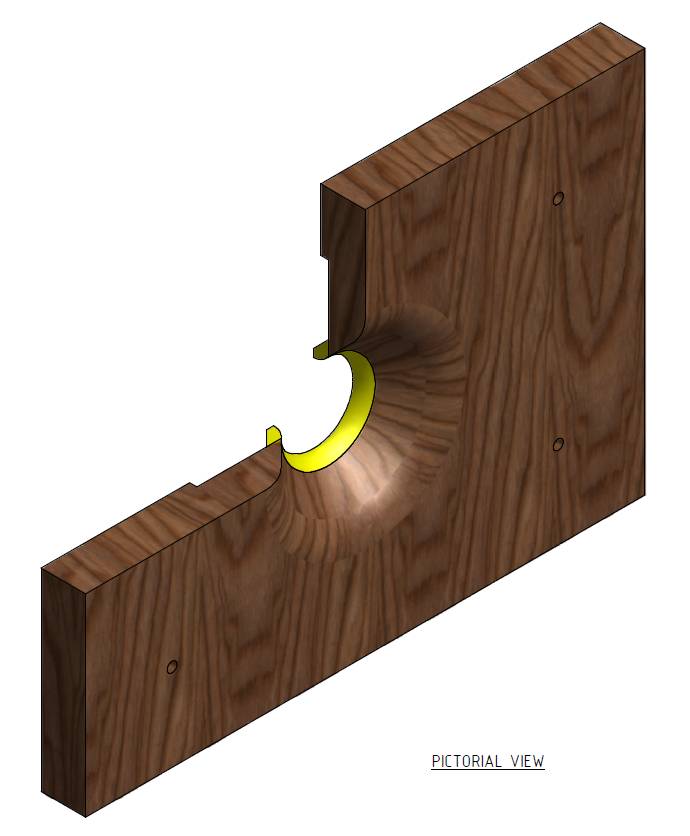
The fit in the throat was good, but not perfect.
It was around this time we went to a round Waveguide, which was first made by Joel Wesseling.
Later it was up to me to continue it, but it was decided to give an even better throat fit.
This is what I just found, the actual drawing:
PLEASE NOTE COPYRIGHT - ONLY ALLOWED FOR SINGLE PERSONAL USE:
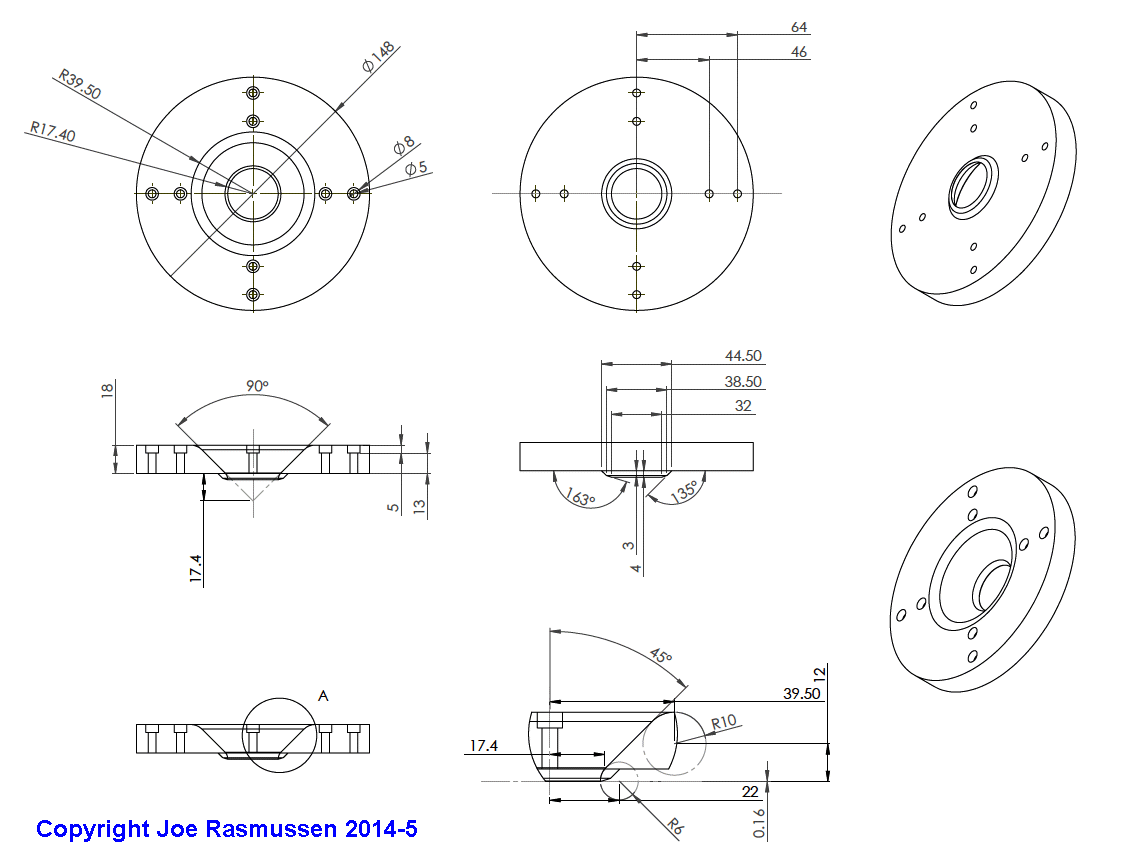
Look carefully at the throat and the 163 degrees and 135 degrees, they are critical to get the best throat fit.
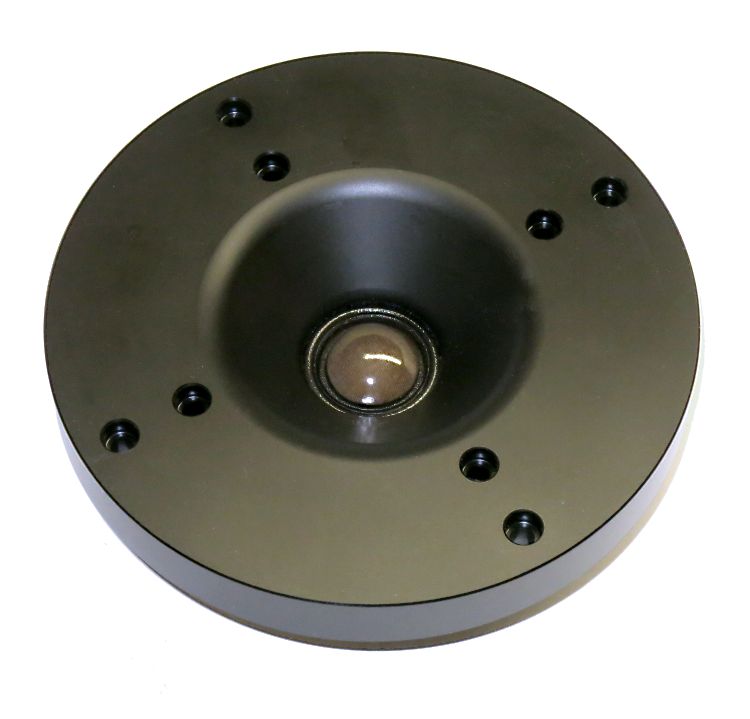
The key is the fit inside the bevelled edge, you don't want a gap there.

This is bad and will give you an irregular response:

This was the original drawing with the square 18mm MDF was used, was hand-made by a friend, about ten pairs:


The fit in the throat was good, but not perfect.
It was around this time we went to a round Waveguide, which was first made by Joel Wesseling.
Later it was up to me to continue it, but it was decided to give an even better throat fit.
This is what I just found, the actual drawing:
PLEASE NOTE COPYRIGHT - ONLY ALLOWED FOR SINGLE PERSONAL USE:

Look carefully at the throat and the 163 degrees and 135 degrees, they are critical to get the best throat fit.

Thank you Joe and hope you get to feeling 100% soon. This is very useful and thanks again for sharing. As common with many things, this is a relatively simple part but with subtle important features.
Joe, have you considered using a small amount of dental putty on the mating surfaces of the waveguide to eliminate any possible gaps to existing tweeter structure?
Joe, have you considered using a small amount of dental putty on the mating surfaces of the waveguide to eliminate any possible gaps to existing tweeter structure?
That is always an option and I have seen samples of Waveguides that did not work properly and a little filler did the job.
Are you managing with the rain Joe?
This was taken an hour ago in Penrith.
I am about half an hour's drive away.
If the Warragamba overflows, the sluices open (photo below is today), it is Penrith and the North-West of Sydney that is at risk of flooding. It will not flow directly east (South-West Sydney area) which is where I am. I am also on a fairly high spot and sloped terrain towards a major creek and flood area, that is where all the water will go. When we bought this land and built on it, I was very conscious of getting something that is pretty much as flood-free as you can get.
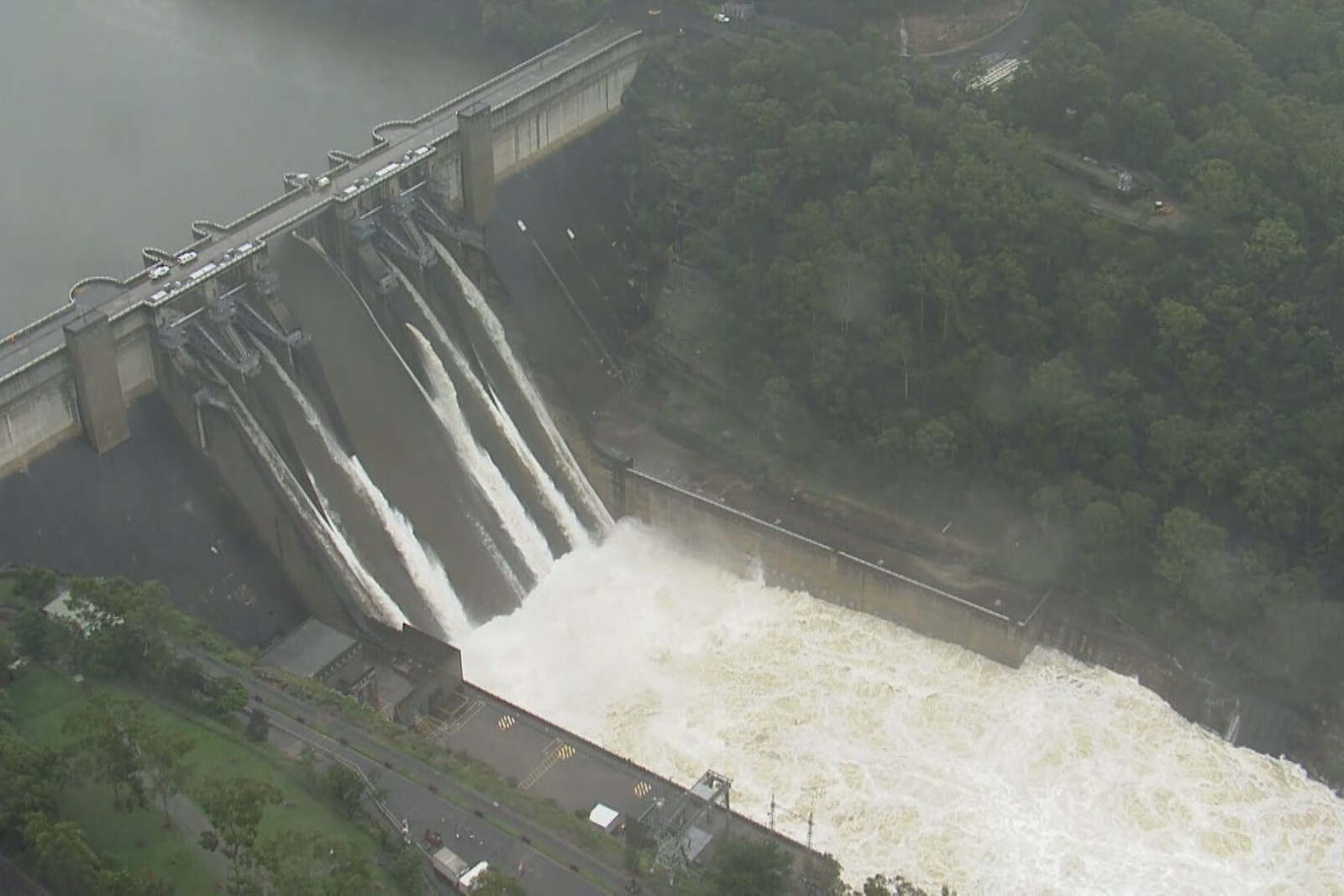
This is a rare sight. You can go for twenty years and not see this.
Elsinore owners ONLY!
Another day where I am yet again reminded how much I love the Elsinore's... Today Im listening to one of my favorite Elsinore music and I wondered if you folks hear the same thing. I love music, but I absolutely love great sounding music. Of all the music I have heard about, all of the best recordings folks talk about, I still have not heard anything like Nigel Stanford's music...
SO, I email him to ask for permission to put up a few song clips,
The artist actually responded, saying go for it!!!
That said, I have a 3 min clip with the beginnings of 3 songs. I didnt pay too much attention to what I chose, they are all fantastic sounding music...
Nigel Stanford 3in3
The wav file is 144meg, Have at it!
Let me know what you think...
Another day where I am yet again reminded how much I love the Elsinore's... Today Im listening to one of my favorite Elsinore music and I wondered if you folks hear the same thing. I love music, but I absolutely love great sounding music. Of all the music I have heard about, all of the best recordings folks talk about, I still have not heard anything like Nigel Stanford's music...
SO, I email him to ask for permission to put up a few song clips,
The artist actually responded, saying go for it!!!
That said, I have a 3 min clip with the beginnings of 3 songs. I didnt pay too much attention to what I chose, they are all fantastic sounding music...
Nigel Stanford 3in3
The wav file is 144meg, Have at it!
Let me know what you think...
Attachments
Forgot to let those who don't have elsinore's off the hook! I was only playing, dl and let me know what you think as well!!!
as i can see waveguide diametr is 148 mm but on constructure drawing page the hole for waveguide is 152 - thats really strange how it is so fitted on the picture of loudspeaker if like that
as i can see waveguide diametr is 148 mm but on constructure drawing page the hole for waveguide is 152...
Corrected! I think that this is a legacy of Joel's Waveguides were made out of aluminium and 150mm leaving 1mm all around. But we have been making it out of rounds (see below) of Acetal (or Delrin) and they are 150mm diameter and for better finish are machined to 148mm.
Attachments
I'm new to this thread. Planning a build of these using 18-19mm plywood here in USA. As I have gone thru this thread I've seen evidence of some of these being built out of plywood of this thickness. I've also read 'keep the width of the outside the same', and for the most part 'keep the same height'.
To maintain the unstuffed +- 75L internal volume, 'decrease the depth'. In some cases different bracing can also reduce the volume occupied by said braces and this, it seems, should also be accounted for.
Now for my questions, and it is rather generic and applies to many speakers, not just these. It has been stated with stuffing, the volume can approach ~100L.
1. Why bother reducing the depth when using different plywood or bracing when the stuffing makes it seem bigger and, arguably, swamps the effect of the relatively minor unstuffed volume increase using thinner plywood?
2. At some point, keeping the width and height the same, but reducing the depth, would there be a point where a 'significant' depth reduction would change the internal geometry enough to cause a problem?
To maintain the unstuffed +- 75L internal volume, 'decrease the depth'. In some cases different bracing can also reduce the volume occupied by said braces and this, it seems, should also be accounted for.
Now for my questions, and it is rather generic and applies to many speakers, not just these. It has been stated with stuffing, the volume can approach ~100L.
1. Why bother reducing the depth when using different plywood or bracing when the stuffing makes it seem bigger and, arguably, swamps the effect of the relatively minor unstuffed volume increase using thinner plywood?
2. At some point, keeping the width and height the same, but reducing the depth, would there be a point where a 'significant' depth reduction would change the internal geometry enough to cause a problem?
Have had a set of these speakers on the back burner for ages (through 2 house moves!)
Decided to put DIY on the house aside and get cracking with them. Helped that I've recently taken up spray painting for woodwork projects.
Right now they're standing in a room that needs the floor tiling and a bit of tidying - will report back with a photo in a week when sorted.
Mildly tweaked the design of the cabinets. They're about 125mm taller to bring the tweeters up to ear level, and the added volume has been reduced back to stock with a silly amount of epoxy/sand in an elaborate pattern on the back panel. The goals of the sand nonsense, aside from reducing cabinet volume a little, was to add stiffness and lots and lots of weight (over 50kg each without drivers).
Rounded corners (1.5" radius) were chosen mainly for aesthetics, but perhaps assist diffraction too. Don't mind either way, much fun with the router though 🙂
Right now, there's only dampening materials on the walls, no bass port and the crossover is a single 4.7 uF cap blocking bass to the tweeters. They're being driven by a pair of 3 channel Denon amps - so tri-wired. Sound pretty good, but clearly need tuning. Also only finished in a white shellac primer but look pretty good.
Decided to put DIY on the house aside and get cracking with them. Helped that I've recently taken up spray painting for woodwork projects.
Right now they're standing in a room that needs the floor tiling and a bit of tidying - will report back with a photo in a week when sorted.
Mildly tweaked the design of the cabinets. They're about 125mm taller to bring the tweeters up to ear level, and the added volume has been reduced back to stock with a silly amount of epoxy/sand in an elaborate pattern on the back panel. The goals of the sand nonsense, aside from reducing cabinet volume a little, was to add stiffness and lots and lots of weight (over 50kg each without drivers).
Rounded corners (1.5" radius) were chosen mainly for aesthetics, but perhaps assist diffraction too. Don't mind either way, much fun with the router though 🙂
Right now, there's only dampening materials on the walls, no bass port and the crossover is a single 4.7 uF cap blocking bass to the tweeters. They're being driven by a pair of 3 channel Denon amps - so tri-wired. Sound pretty good, but clearly need tuning. Also only finished in a white shellac primer but look pretty good.
Attachments
Lightning Phil,
If I understand you correctly, the speakers have a greater internal height of approx 125 mm?
This additional internal height resulted in greater internal volume. You reduced this additional volume by adding material on the back panel?
So basically, the internal height is greater, but the internal depth has been reduced to keep the volume as close as possible to original box design?
If I understand you correctly, the speakers have a greater internal height of approx 125 mm?
This additional internal height resulted in greater internal volume. You reduced this additional volume by adding material on the back panel?
So basically, the internal height is greater, but the internal depth has been reduced to keep the volume as close as possible to original box design?
Yes, that's right. Though the back isn't flat. Glued some ~50mm acoustic foam between the braces, then carved out enormous diagonal crosses in the foam to roughly remove the desired volume. Then filled the empty cross spaces up with the sand/epoxy mix. (might have been polyurethane not epoxy - ages ago)
The idea was to create a lumpy back to break up reflections. Generally thinking that every whimsical idea must help, or at the very least add to the story.
3D printing the bass ports at the mo. Should be tuned to between 32 and 35 Hz, depending how it behaves. Usually prefer sealed cabinets, but if having a port, then tuned quite low. Some extra stuffing will be added centrally height wise to dampen the organ pipe effect I can hear. That will be put in place in a few days (each port takes about ~27 hours to print including the wait for it to detach itself from the build plate).
Final tuning will be done once they're in the final resting place - which will be in 2 further house moves. So probably going to tinker a bit in the mean time.
Is it considered a sin here to deviate from the design at all? Hope not! They should eventually end up quite close but tuned to suite whichever house I end up in in Helsinki.
The idea was to create a lumpy back to break up reflections. Generally thinking that every whimsical idea must help, or at the very least add to the story.
3D printing the bass ports at the mo. Should be tuned to between 32 and 35 Hz, depending how it behaves. Usually prefer sealed cabinets, but if having a port, then tuned quite low. Some extra stuffing will be added centrally height wise to dampen the organ pipe effect I can hear. That will be put in place in a few days (each port takes about ~27 hours to print including the wait for it to detach itself from the build plate).
Final tuning will be done once they're in the final resting place - which will be in 2 further house moves. So probably going to tinker a bit in the mean time.
Is it considered a sin here to deviate from the design at all? Hope not! They should eventually end up quite close but tuned to suite whichever house I end up in in Helsinki.
Last edited:
Lightning Phil,
Usually it's better to follow the original specs for a well thought out design. 😀
Not sure the effects of increasing the length internally will end up having on the cabinet; although the Elsinores are designed as a bass-reflex, it is likely that there is some 1/4 wave resonance at play too. Your elongated the length probably changes something, but you might be ok.
Good luck with rest of the build.
Usually it's better to follow the original specs for a well thought out design. 😀
Not sure the effects of increasing the length internally will end up having on the cabinet; although the Elsinores are designed as a bass-reflex, it is likely that there is some 1/4 wave resonance at play too. Your elongated the length probably changes something, but you might be ok.
Good luck with rest of the build.
...aside from reducing cabinet volume a little, was to add stiffness and lots and lots of weight (over 50kg each without drivers).
Stiffness is an asset, adding weight is not.
dave
- Home
- Loudspeakers
- Multi-Way
- The "Elsinore Project" Thread
 Some off-topic discussion deleted.
Some off-topic discussion deleted.


